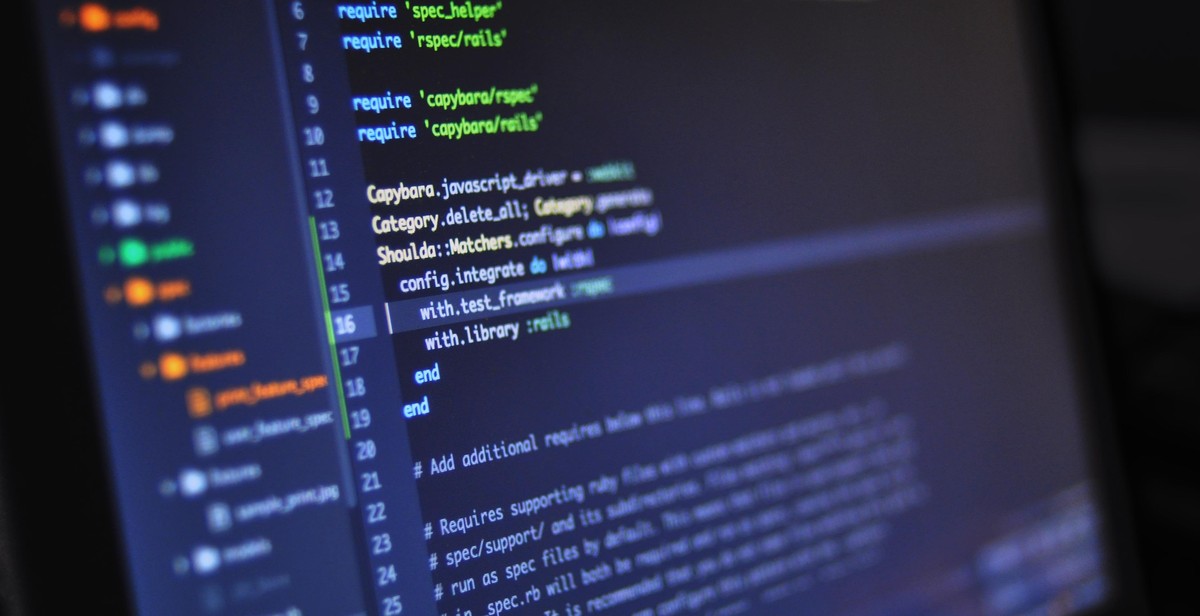How to Learn a Programming Language: Step-by-Step Guide for Beginners
If you’re interested in learning to code, you’re not alone. Programming is a valuable skill that can lead to a fulfilling career, or even just help you understand the technology that surrounds us every day. However, it can be overwhelming to know where to start, especially if you’re a beginner.
In this step-by-step guide, we’ll show you how to learn a programming language from scratch. We’ll cover everything from choosing the right language for your goals, to finding resources and creating a study plan that works for you. Whether you’re looking to become a professional developer or just want to dabble in coding as a hobby, this guide will give you a solid foundation to build on.
Why Learn to Code?
There are many reasons to learn to code. For one, programming is a valuable skill that is in high demand in today’s job market. According to the Bureau of Labor Statistics, the demand for software developers is expected to grow 22% from 2019 to 2029, much faster than the average for all occupations.
But even if you’re not interested in pursuing a career in programming, learning to code can still be beneficial. It can help you automate tasks, create your own websites or apps, or even just improve your problem-solving abilities.
Choosing a Programming Language
Before you can start learning to code, you need to choose a programming language. There are many different languages to choose from, each with its own strengths and weaknesses. Some popular options include Python, Java, JavaScript, and Ruby.
When choosing a language, consider your goals. Are you interested in web development, data analysis, or mobile app development? Different languages are better suited for different tasks, so it’s important to choose one that aligns with your interests.
Once you’ve chosen a language, it’s time to start learning. In the next section, we’ll cover some of the best resources for beginners to get started with programming.

Choose a Programming Language
Choosing the right programming language can be a daunting task for beginners. There are dozens of programming languages available, each with its own strengths and weaknesses. Here are some factors to consider when choosing a programming language:
Consider Your Goals
Before choosing a programming language, it is important to consider your goals and what you want to achieve with your programming skills. Are you interested in web development, game development, data analysis, or mobile app development? Different programming languages are better suited for different purposes.
Consider the Job Market
If you are learning programming to enhance your career prospects, it is important to consider the job market and the demand for different programming languages. For example, if you are interested in web development, you might want to learn languages such as HTML, CSS, and JavaScript, as they are in high demand in the job market.
Consider the Learning Curve
Some programming languages are easier to learn than others. If you are a beginner, you might want to start with a language that has a gentle learning curve, such as Python or Ruby. These languages are easy to read and write and have a large community of developers who can help you learn.
| Programming Language | Strengths | Weaknesses |
|---|---|---|
| Python | Easy to learn, versatile, used in data analysis and web development | Slower than other languages, not ideal for mobile app development |
| Java | Used in web development, mobile app development, and game development | Can be difficult to learn, requires a lot of code to accomplish simple tasks |
| C++ | Used in game development, system programming, and high-performance computing | Difficult to learn, easy to make errors |
Ultimately, the programming language you choose will depend on your goals, the job market, and your comfort level with the learning curve. With the right approach and dedication, you can learn any programming language and achieve your goals as a programmer.

Set Up Your Environment
Before you start learning a programming language, it is important to set up your environment properly. This will ensure that you have all the necessary tools and software to start programming.
Choose an Integrated Development Environment (IDE)
An Integrated Development Environment (IDE) is a software application that provides comprehensive facilities to computer programmers for software development. It includes a code editor, a debugger, a compiler, and other tools that are essential for programming. Some popular IDEs for programming languages include:
- Visual Studio Code for JavaScript, Python, and many other languages
- PyCharm for Python
- IntelliJ IDEA for Java
- Eclipse for Java and many other languages
Install the Necessary Software
Depending on the programming language you want to learn, you may need to install specific software. For example, if you want to learn Python, you will need to install Python on your computer. You can download Python from the official website and follow the installation instructions.
Configure Your Environment
After installing the necessary software, you need to configure your environment. This includes setting up your IDE, configuring your code editor, and installing any necessary plugins or extensions. You may also need to set up your development environment variables, such as the PATH variable in Windows.
It is important to ensure that your environment is properly configured so that you can start programming without any issues.
| Programming Language | IDE | Software |
|---|---|---|
| JavaScript | Visual Studio Code | Node.js |
| Python | PyCharm | Python |
| Java | IntelliJ IDEA | Java JDK |

Learn the Basics
If you are new to programming, it is essential to understand the basic concepts of programming languages. Here are some of the fundamental concepts you should know.
Understand Basic Concepts
Before you start learning a programming language, you should have a basic understanding of programming concepts such as variables, data types, control structures, functions, and object-oriented programming. These concepts are the building blocks of any programming language, and understanding them will make learning a new language much easier.
Learn Basic Syntax
Every programming language has its own syntax, which is the set of rules that define how to write code in that language. Learning the basic syntax of a language is essential to be able to write code that is readable and understandable by other programmers. Some of the syntax rules include how to declare variables, how to write functions, and how to use control structures.
Start Writing Code
Once you have a basic understanding of programming concepts and the syntax of the language you want to learn, it is time to start writing code. Start with simple programs and gradually move on to more complex ones. You can find many resources online that provide programming challenges and exercises to help you practice your coding skills.
- Start with simple programs and gradually move on to more complex ones.
- Practice coding challenges and exercises to improve your skills.
- Join online communities and forums to connect with other programmers and learn from their experiences.

Practice, Practice, Practice
Learning a programming language is not just about reading books and watching tutorials. It requires a lot of practice to master the language. Here are some ways to practice:
Code Challenges
Code challenges are a great way to practice coding in a fun and engaging way. There are many websites that offer code challenges, such as HackerRank, CodeWars, and Project Euler. These websites offer a variety of challenges, ranging from easy to difficult, that can help you improve your coding skills.
Personal Projects
Personal projects are a great way to apply what you have learned and practice your coding skills. Choose a project that interests you and start building it from scratch. This will help you to understand the language better and develop problem-solving skills.
Collaborate with Other Programmers
Collaborating with other programmers can help you learn new techniques and gain valuable insights. Join online communities, such as GitHub, Stack Overflow, and Reddit, where you can collaborate with other programmers and work on projects together. This will help you to learn from others and improve your coding skills.
Table: Comparison of Practice Methods
| Practice Method | Advantages | Disadvantages |
|---|---|---|
| Code Challenges | Fun and engaging, helps to improve coding skills | May not be applicable to real-world scenarios |
| Personal Projects | Helps to apply what you have learned, develops problem-solving skills | May require a lot of time and effort |
| Collaboration with Other Programmers | Provides valuable insights and learning opportunities | May require coordination and communication with others |

Stay Motivated
Learning a programming language can be a daunting task, but with the right mindset and motivation, you can achieve your goals. Here are some tips to help you stay motivated throughout the learning process:
Set Goals
Setting goals is an essential part of staying motivated while learning a programming language. You need to have a clear idea of what you want to achieve and what steps you need to take to get there. Break down your goals into smaller, achievable tasks and set deadlines for each of them. This will help you track your progress and stay motivated as you accomplish each task.
Join a Community
Joining a community of like-minded individuals who are also learning a programming language can be a great way to stay motivated. You can share your experiences, ask for help, and get support from others who are going through the same process. Join online forums, attend meetups and conferences, and connect with others on social media platforms.
Celebrate Your Progress
It’s important to celebrate your progress, no matter how small it may seem. Learning a programming language is a challenging task, and every milestone you achieve is worth celebrating. Take the time to acknowledge your accomplishments, and reward yourself for your hard work. This will help you stay motivated and focused on your goals.
By setting goals, joining a community, and celebrating your progress, you can stay motivated throughout the learning process and achieve your goals of learning a programming language.

Conclusion
Learning a programming language may seem daunting, but with the right approach and mindset, it can be a fulfilling and rewarding experience. Remember that programming is a skill that takes time and practice to master, so don’t be discouraged if you encounter difficulties along the way.
Key Takeaways
- Choose a language that aligns with your goals and interests.
- Utilize a variety of resources, including online courses, books, and forums.
- Practice regularly and consistently to reinforce your understanding.
- Join a community of learners to share knowledge and gain support.
Final Thoughts
Learning a programming language can open up many doors and opportunities in the tech industry and beyond. Whether you’re interested in building websites, creating apps, or pursuing a career in software development, the skills you gain from learning a programming language are invaluable.
Remember to stay patient, persistent, and curious as you embark on this journey. With dedication and hard work, you can become a proficient programmer and achieve your goals.
